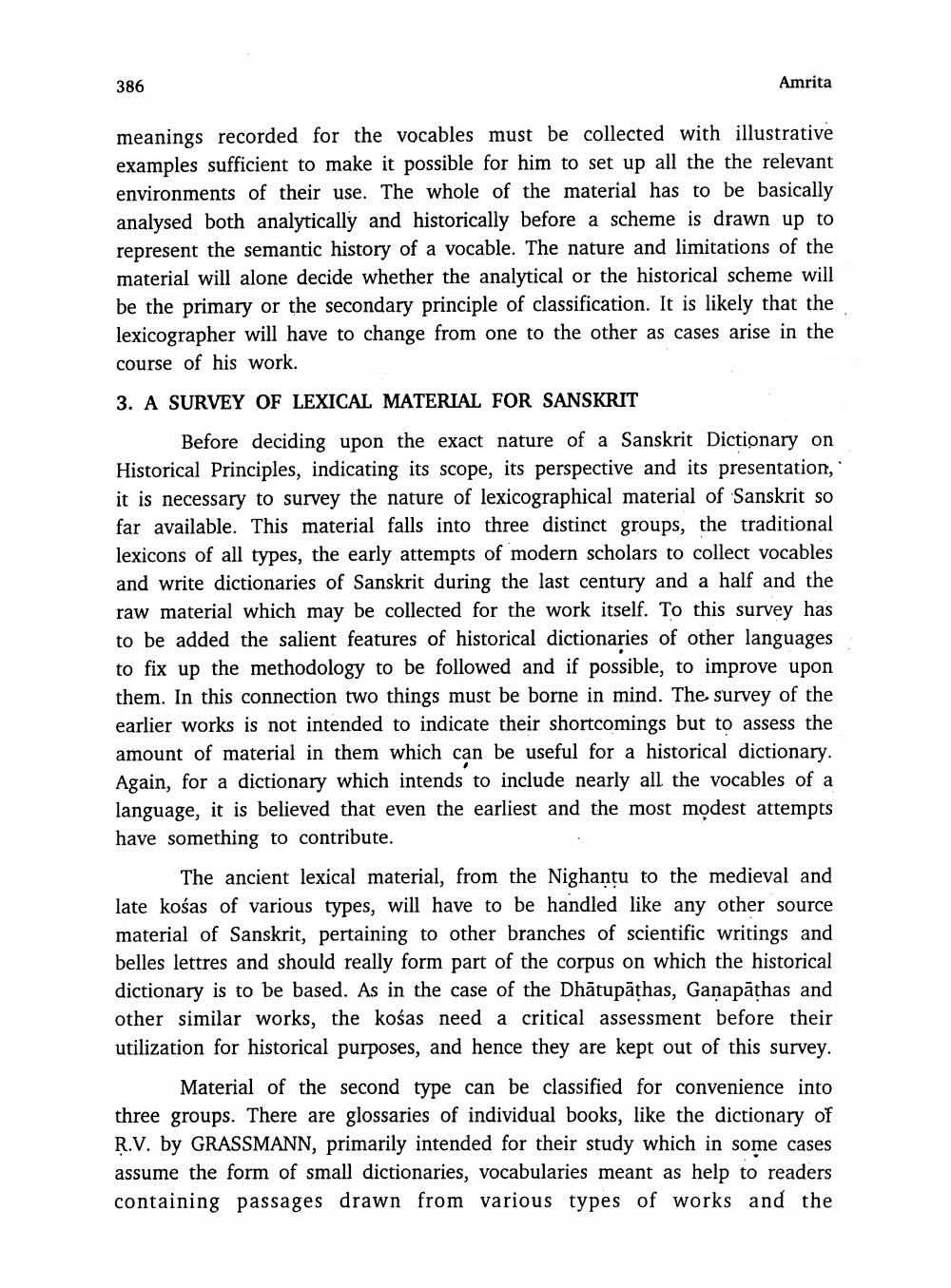________________
386
Amrita
meanings recorded for the vocables must be collected with illustrative examples sufficient to make it possible for him to set up all the the relevant. environments of their use. The whole of the material has to be basically. analysed both analytically and historically before a scheme is drawn up to represent the semantic history of a vocable. The nature and limitations of the material will alone decide whether the analytical or the historical scheme will be the primary or the secondary principle of classification. It is likely that the lexicographer will have to change from one to the other as cases arise in the course of his work.
3. A SURVEY OF LEXICAL MATERIAL FOR SANSKRIT
Before deciding upon the exact nature of a Sanskrit Dictionary on Historical Principles, indicating its scope, its perspective and its presentation, it is necessary to survey the nature of lexicographical material of Sanskrit so far available. This material falls into three distinct groups, the traditional lexicons of all types, the early attempts of modern scholars to collect vocables and write dictionaries of Sanskrit during the last century and a half and the raw material which may be collected for the work itself. To this survey has to be added the salient features of historical dictionaries of other languages to fix up the methodology to be followed and if possible, to improve upon them. In this connection two things must be borne in mind. The survey of the earlier works is not intended to indicate their shortcomings but to assess the amount of material in them which can be useful for a historical dictionary. Again, for a dictionary which intends to include nearly all the vocables of a language, it is believed that even the earliest and the most modest attempts have something to contribute.
The ancient lexical material, from the Nighantu to the medieval and late kośas of various types, will have to be handled like any other source material of Sanskrit, pertaining to other branches of scientific writings and belles lettres and should really form part of the corpus on which the historical dictionary is to be based. As in the case of the Dhätupäthas, Ganapathas and other similar works, the kośas need a critical assessment before their utilization for historical purposes, and hence they are kept out of this survey.
Material of the second type can be classified for convenience into three groups. There are glossaries of individual books, like the dictionary of R.V. by GRASSMANN, primarily intended for their study which in some cases assume the form of small dictionaries, vocabularies meant as help to readers containing passages drawn from various types of works and the




